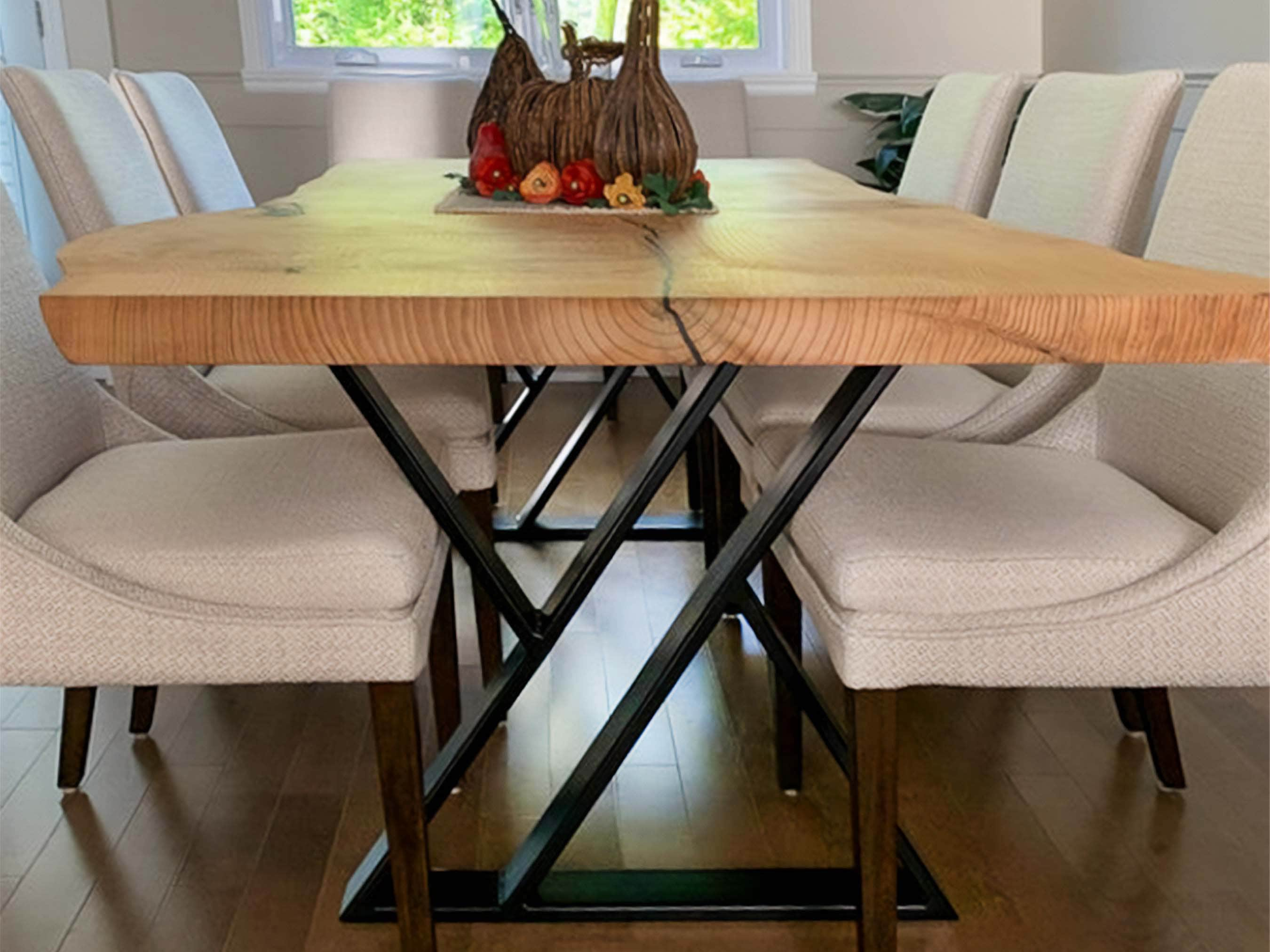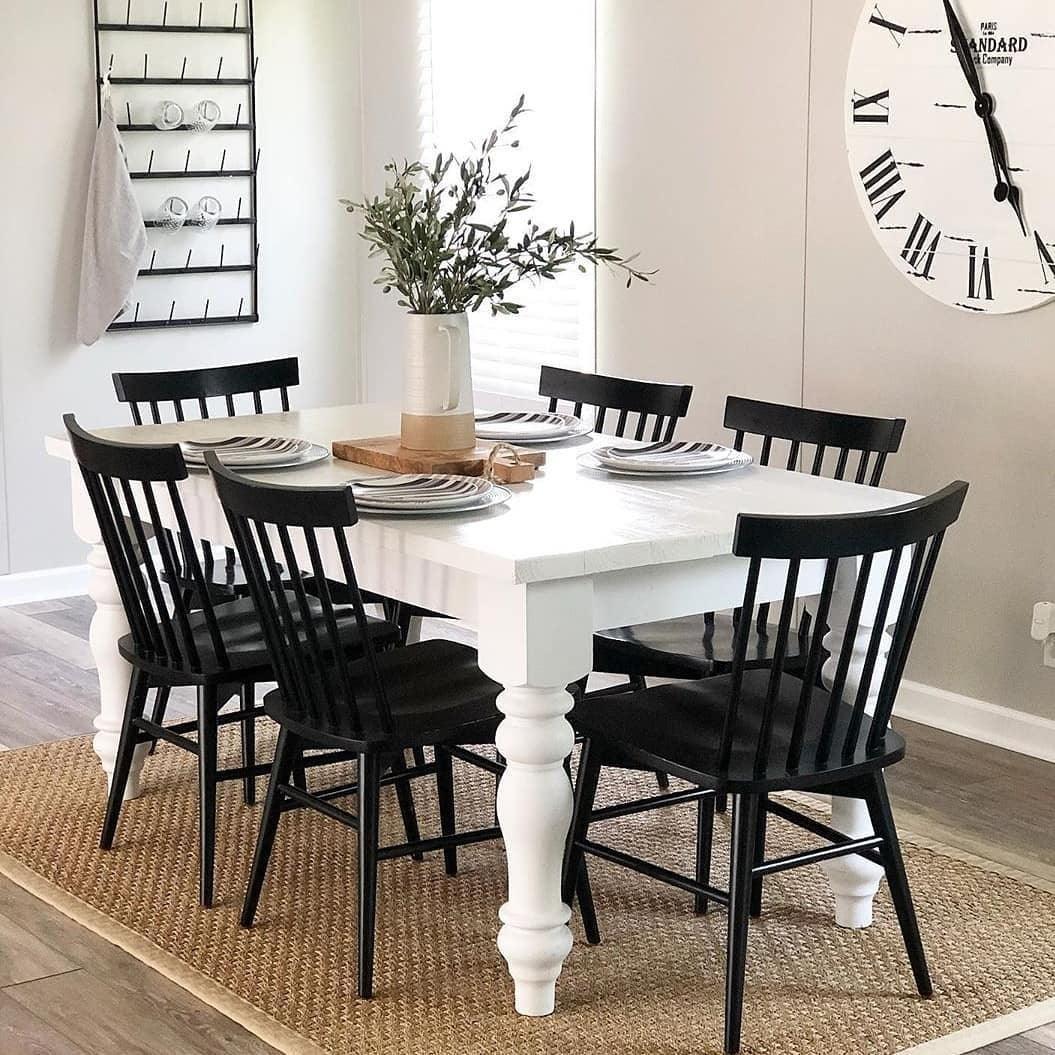Enhance Your Dining Room with Unique and Modern Dining Room Table Legs
From Traditional to Modern: Locate the Perfect Eating Room Table Legs for Your Design
While classic styles such as cabriole and transformed legs evoke a sense of classic elegance, modern designs like hairpin and geometric choices provide a possibility for striking aesthetic interest. As you think about these components, the question stays: just how can you seamlessly integrate these varied leg designs to produce an unified dining experience?
Understanding Table Leg Styles
The range of dining space table leg styles can dramatically influence both the looks and capability of the room. Each leg design adds unique functional attributes and aesthetic aspects, providing to diverse design preferences and usage requirements. Understanding these designs is essential for picking the appropriate table that aligns with your total interior decoration vision.
For circumstances, tapered legs supply a tidy, timeless look that can boost an area's elegance, while pedestal bases supply stability and make the most of legroom, making them perfect for smaller spaces. Hairpin legs, a hallmark of mid-century modern-day style, introduce a commercial flair, permitting an airy, open feel. Trestle legs evoke rustic charm, supplying robust assistance and a sense of eternity.
In addition, the option of products plays a considerable role. Wooden legs can bring warmth and texture, whereas metal options often convey a smooth, contemporary vibe. Eventually, recognizing table leg designs is necessary for creating a natural dining location that shows individual style while making sure functionality and convenience. By thoughtfully taking into consideration these aspects, you can boost both the practical and visual charm of your eating room.
Traditional Table Leg Options
When choosing dining-room table legs, conventional choices usually embody classic elegance and craftsmanship. These styles mirror an abundant heritage and a commitment to top quality, making them excellent for those that value timeless visual appeals.
One of the most iconic traditional leg styles is the cabriole leg, identified by its graceful rounded form. This layout typically includes ornamental makings and is most typically located in Queen Anne and Chippendale furnishings. An additional preferred alternative is the transformed leg, which boasts a collection of smooth, rounded forms that give a timeless look while maintaining stability.
Furthermore, the straight leg, while simple, provides a basic and tough framework that can blend effortlessly with a selection of tabletop designs. For those attracted to ornate outlining, claw-and-ball feet legs evoke a sense of majesty and can offer as a stunning centerpiece in any kind of eating area.
Last but not least, pedestal bases, although not strictly legs, give a different typical alternative that enables for sufficient legroom and can be magnificently carved. Each of these standard leg designs contributes to the overall ambiance of a dining-room, weding feature with aesthetic allure.

Modern Table Leg Styles
Modern table leg designs offer a varied array of designs that highlight innovative products and tidy lines. These styles commonly prioritize functionality while functioning as striking prime focus within a dining area. Minimal appearances have a peek at this site are widespread, with legs crafted from products such as steel, glass, and engineered wood, which contribute to a modern and ventilated feeling.
One prominent layout is the barrette leg, defined by its slim, tapered framework that provides stability without overwhelming the table top (dining room table legs). This style is typically discovered in mid-century modern furniture and can effortlessly enhance numerous table shapes. One more pattern is the usage of geometric forms, where legs might take on angular or unbalanced types, including visual rate of interest and a touch of artistry

Blending Styles for Distinct Spaces
Commonly, house owners seek to create special dining rooms that mirror their individual design by mixing different design aspects. This method enables the unification of diverse aesthetic appeals, causing a harmonious yet unique atmosphere. For example, matching a rustic find more information wooden table with streamlined, modern-day metal legs can create a captivating comparison that boosts the room's general appeal.
Furthermore, integrating vintage table legs with contemporary tabletops can stimulate a feeling of background while maintaining a modern-day perceptiveness. Such mixes not only display specific preference but also encourage creativity, permitting homeowners to curate a room that feels both personal and inviting.
Shade plays a critical function in this mixing procedure; choosing table legs that enhance or comparison with the existing color pattern can enhance visual rate of interest. Whitewashed legs can soften the boldness of a dark table surface, producing a balanced visual.
Tips for Picking the Right Legs
Picking the right table legs is necessary for achieving both capability and visual appeal in your eating area. Begin by taking into consideration the total design of your area. Typical settings profit from legs that feature elaborate makings or transformed styles, while modern spaces may ask for smooth, minimalist styles.
Following, evaluate the elevation and stability of the legs. dining room table legs. Typical eating tables range between 28 to 30 inches in height, so make sure the legs match this dimension for comfort. Furthermore, durable products, such as hardwood or metal, can improve stability and longevity
Evaluate the leg form as well-- choices include right, tapered, or pedestal layouts. Straight legs provide a traditional look, while conical legs can add a touch of elegance. Pedestal bases supply enough legroom and are ideal for smaller sized spaces.
Final Thought
In recap, choosing the excellent dining room table legs calls for careful factor to consider of both traditional and modern-day designs. By harmonizing leg design, elevation, and material with the general décor, a cohesive and welcoming ambience can be attained.
The variety of dining space table leg designs can significantly affect both the aesthetics and functionality of the room. Inevitably, comprehending table leg styles is essential for developing a natural eating location that reflects personal design while making certain usefulness and comfort.One of the most famous traditional leg styles is the cabriole leg, defined by its elegant rounded shape. Straight legs offer a timeless look, while conical legs can add a touch of beauty.In recap, picking the perfect dining room table legs needs mindful factor to consider of both contemporary and conventional designs.